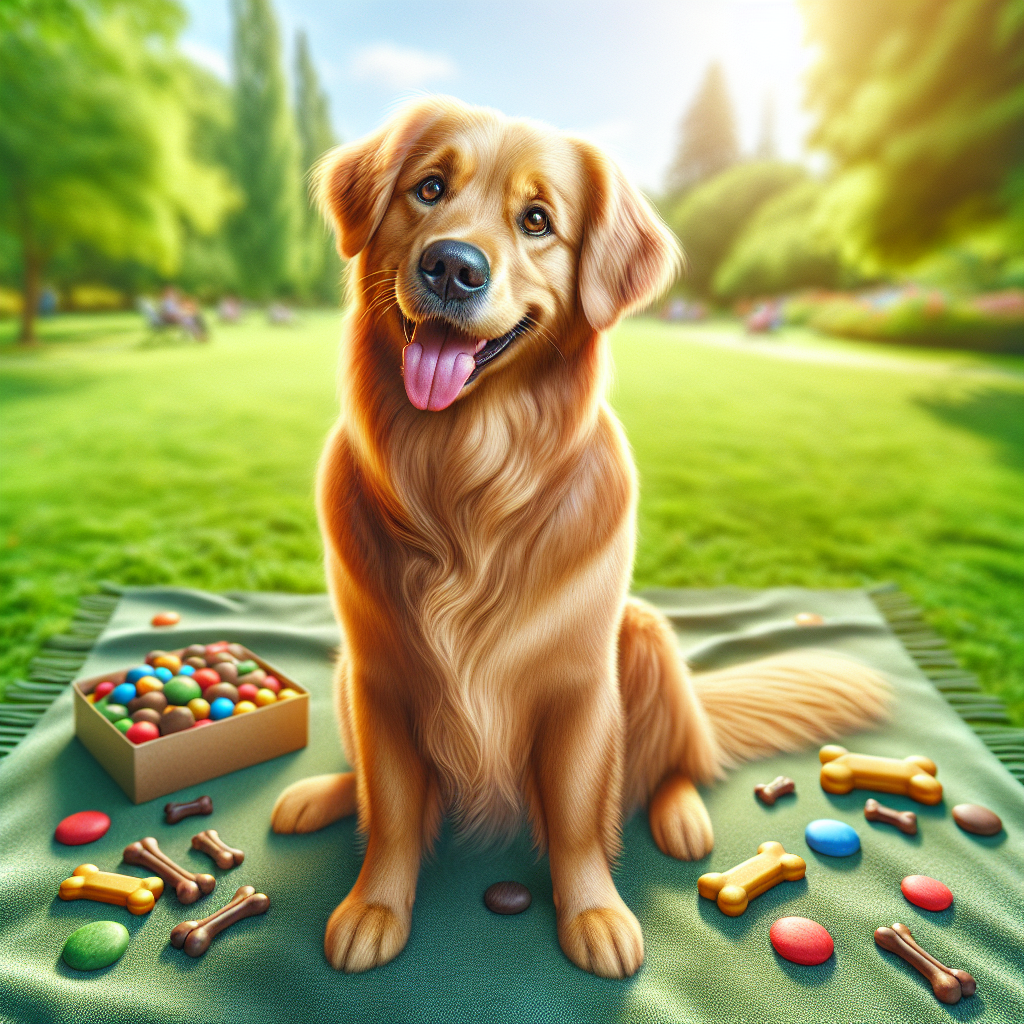Which Treat is Best for Dog Training? Find Out Now!
When it comes to dog training, the choice of treats is crucial. Treats serve not only as a reward but also as a powerful motivator for your furry friend. Understanding the significance of treats in training can enhance your dog’s learning experience and strengthen your bond.
Using treats effectively can create a positive association with desired behaviors. Here are some key points to consider:
- Motivation: Dogs are naturally driven by food, and treats are an excellent way to encourage them during training sessions. The right treats can make your dog eager to learn.
- Reinforcement: Consistent use of treats helps reinforce good behavior, making it more likely that your dog will repeat it in the future. This is particularly effective in the early stages of training.
- Variety: Different dogs have different preferences. Experimenting with a variety of treats ensures that you find the ones that excite your dog the most, making training sessions more enjoyable.
At Happypup.dog, we provide a range of delicious and nutritious dog treats that can help in your training efforts. Treat your furry friend to the joy they deserve with our range of delicious and nutritious dog treats.
Factors to Consider When Choosing Dog Training Treats
Selecting the right treats for dog training involves more than just picking what looks appealing. There are several factors to consider to ensure that both you and your dog have a successful training experience.
- Size: Treats should be small enough for quick consumption. This prevents interruptions during training and allows you to give multiple rewards without overfeeding.
- Flavor: Dogs have distinct preferences when it comes to flavor. Experiment with various flavors like chicken, beef, or peanut butter to find what excites your dog the most.
- Ingredients: Opt for high-quality treats made from natural ingredients. Avoid artificial additives and fillers that may not be healthy for your dog.
- Caloric Content: Training can involve frequent treats, so it’s essential to choose low-calorie options to prevent weight gain. Look for treats that are specifically designed for training purposes.
- Texture: Soft treats can be easier for dogs to chew quickly during training sessions, while crunchy ones can provide a satisfying reward. Consider your dog’s preferences and dental needs.
Taking these factors into account when selecting treats will enhance your dog’s training experience and help you achieve the best results.
Top Healthy Treats for Effective Dog Training

When it comes to effective dog training, choosing the right treats can make all the difference. Here are some of the top healthy treats that not only motivate your pup but also contribute to their overall health:
- Freeze-Dried Meat Treats: Made from real meat, these treats are high in protein and irresistible to dogs. They are also light and can be easily broken into smaller pieces for training.
- Carrots: A crunchy and low-calorie option, carrots are a great choice for training. They are packed with vitamins and can be cut into bite-sized pieces for easy handling.
- Peanut Butter Treats: Many dogs adore peanut butter. Look for treats that use natural peanut butter without added sugars or hydrogenated oils. These can be an excellent reward during training.
- Sweet Potato Chews: Rich in fiber and vitamins, sweet potato chews are a healthy, chewy option. They can keep your dog engaged while providing essential nutrients.
- Commercial Training Treats: There are many brands that offer specially formulated training treats. Look for those that list high-quality ingredients and are low in calories, ensuring they are suitable for frequent use.
Incorporating these healthy treats into your training routine can help keep your dog motivated and focused while promoting their health and well-being.
How to Use Treats in Dog Training Sessions

Using treats effectively in your dog training sessions can significantly enhance your pup's learning experience. Here are some strategies to maximize the benefits of treats during training:
- Timing is Key: The treat should be given immediately after your dog performs the desired behavior. This helps them associate the action with the reward, reinforcing their learning.
- Start with High-Value Treats: Use treats that your dog finds particularly enticing, especially during the initial training phases. This could be freeze-dried meat or soft, chewy treats that your dog loves.
- Gradually Fade Treats: As your dog learns commands, gradually reduce the frequency of treats. Start by rewarding them for every correct action, then move to every other action, and eventually to a variable schedule. This will keep your dog engaged and eager to perform.
- Use Treats for Positive Reinforcement: Always use treats as a reward for good behavior rather than as a bribe. This establishes a positive training environment and encourages your dog to repeat the behavior.
- Mix It Up: Keep training exciting by varying the treats you use. Mixing different flavors and textures can maintain your dog’s interest and motivation.
By implementing these techniques, you can create a productive and enjoyable training atmosphere that strengthens the bond between you and your furry friend.
Common Mistakes to Avoid with Training Treats

When it comes to using treats in dog training, avoiding common pitfalls can make a significant difference in your success. Here are several mistakes to steer clear of:
- Inconsistent Timing: One of the most significant errors is not rewarding your dog immediately after they perform the desired behavior. Delayed rewards can confuse your dog and dilute the effectiveness of the training.
- Using Low-Value Treats: If the treats you offer aren't particularly exciting for your dog, they may not be motivated to learn. Ensure that your treats are high-value, especially when teaching new commands.
- Overusing Treats: While treats are valuable tools, relying too heavily on them can lead to weight gain or unhealthy habits. Ensure you balance treats with your dog's regular diet, and consider using smaller pieces to keep portions controlled.
- Neglecting to Mix It Up: Dogs can get bored with the same treats. Sticking to just one type can diminish their enthusiasm. Rotate between different flavors and textures to keep training fresh and engaging.
- Using Treats as Bribes: Always use treats as rewards for good behavior, not as a means to coax your dog into doing something. This establishes a positive training environment and helps your dog learn that good behavior leads to rewards.
By being aware of these common mistakes, you can enhance your training sessions and foster a more effective learning experience for your dog.
Conclusion: Finding the Best Treat for Your Dog

In conclusion, selecting the right treats for dog training is essential for effective communication and motivation between you and your furry friend. The ideal training treat should be small, palatable, and healthy, ensuring that your dog stays engaged and excited throughout the learning process. Consider factors such as your dog's dietary needs, preferences, and the specific behaviors you're reinforcing.
Additionally, remember to maintain consistency in your training routine and be mindful of the common mistakes to avoid, as mentioned earlier. With the right treats and a solid training plan, you can foster positive behaviors and strengthen the bond with your dog.
Treat your furry friend to the joy they deserve with our range of delicious and nutritious dog treats. Explore our collection today!






